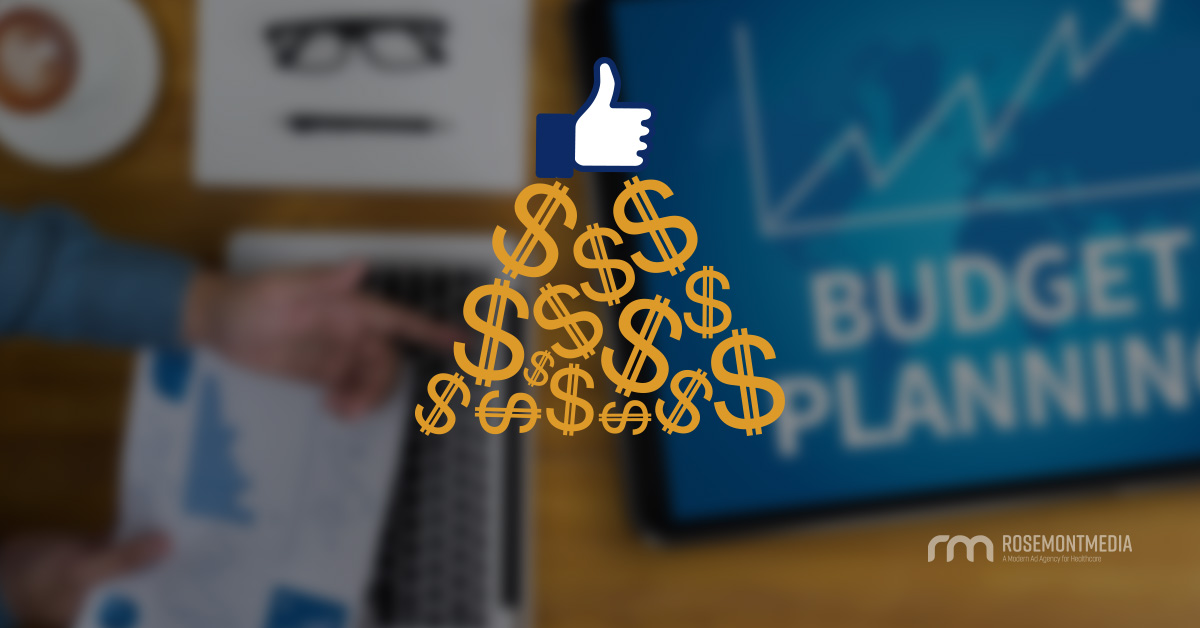Shop Smart, Sell Smart: The Importance of Budgeting for Social Media Marketing

Small business owners understand the importance of budgets; it’s the only way to survive in a merciless industry filled with hungry (and often vicious) competitors. Still, many companies, lean and large, fail to appreciate how developing a dedicated advertising budget for social media is a crucial part of guiding a practice toward consistent success. Whims and waffling have no place in sales. As with all forms of advertising, social media marketing (SMM) requires strategy at every stage, beginning with the budget.
How Much of a Budget Are We Talking?
Many marketers set a social marketing budget at around 10-15 percent of their total advertising budget, but what best serves your needs and goals may vary from those of a practice on the other side of town—or the country. You may wish to allocate a larger or smaller percentage of total resources to this promotional avenue once you determine how influential social platforms are to your patient demographic. While the amount you spend on social ads impacts your advertising success, what you do with that money is even more important. That is why having a knowledgeable social media strategist in your corner can make this process easier and more effective. At Rosemont Media, our team will work with you to identify a suitable budget and customize your plan to optimize every dollar.
What Goes into a Social Media Marketing Budget Plan?
SMM, like other types of advertising, requires some room for experimentation to find the most advantageous approach (and re-evaluating each quarter, each year, and each launch of a new social media platform is typically recommended). Here are a few elements to consider when creating an effective budget:
The Plan
Resist the temptation to put the cart before the horse (“Here’s $1,000, use it for social stuff.”) and start with a plan. Consider the marketing objectives you want to achieve through social advertising and how these promotional actives influence your practice’s success (brand awareness, relationship building, and patient conversion are some primary goals). Think about which social platforms you want to focus on (which social channels is your target demographic active on?) It’s all too easy to spend a lot of money on social media without a plan to guide you, so have a social media strategist on board to ensure each dollar is spent with your goals in mind
The Software
Software not only simplifies SMM, it can also help make each post or promotion go further and be seen by more people. Software decisions include choosing which social platforms, automation services, and project management systems to use. Analytics (for your website and your social media) fall into this category as well.
The Management
Social media is about connecting people—in this case, patients and doctors. Having a team dedicated to developing and implementing your practice’s marketing strategy keeps everything moving smoothly and consistently, and consistency breeds consumer confidence. If you’re going to manage your own social media team, budget for the cost of training and continuing education. Life moves pretty fast in the SMM world, and you have to be ready for every update.
The Branding
Can a prospective patient discern what sets you apart from another doctor they are considering? Your practice philosophy is where your brand begins, and branding allows you to differentiate yourself from the crowd and manage your reputation. Branding includes graphics, images, design elements, style, and more, which can be communicated through content, GIFs, videos, and photos.
The Content
Visual content certainly has its place, but written content delivers your practice’s message once your ad’s photo or video has captured your audience’s attention. Social media messages need to be punchy, memorable, and informative—all within one to three sentences. Crafting quality content that’s engaging and effective requires time and skill.
Paid Advertising
Social media’s broadening range of marketing capabilities make it an arena where marketers are increasing their investments.The paid advertising budget practices allocate to promote their social content is paid directly to the social platform on which content is being promoted (Facebook, Instagram, LinkedIn, etc.). So how much should you set aside for paid social advertising? Goals—and budgets to meet those goals—vary from practice to practice, but here are some ballpark numbers to consider:
- Out of annual revenue, most companies reinvest about 10-15 percent on marketing.
- Marketing budgets are typically broken down to allocate about 35-45 percent for digital marketing efforts.
- Companies commonly dedicate about 15-25 percent of their digital marketing funds to social marketing activities.
That Sounds Pretty Complicated; Is Social Media Marketing Really Necessary?
The truth is SMM can be quite complicated, and this innovative advertising method is always evolving, so keeping up is an ongoing process. But that’s true of marketing as an industry—it is an ever-changing thing. Complexity does not suggest triviality, however. Social media marketing is important, and there is so much for doctors to gain by wielding this tool with skill. Fortunately, you have access to experts in the field who can guide you through every stage of the budgeting processes. Our nimble team of social media strategists, medical and dental consultants, and copywriters are ready to provide the up-to-date intel you need to succeed in this technologically advanced and consumer-savvy new world.
Ready to revolutionize your practice’s approach to marketing? We have solutions and strategies for budgets and businesses of all shapes and sizes, and we’re wired for success. So, let’s talk.
Editor’s note: The original version of this post was published on February 20, 2018.